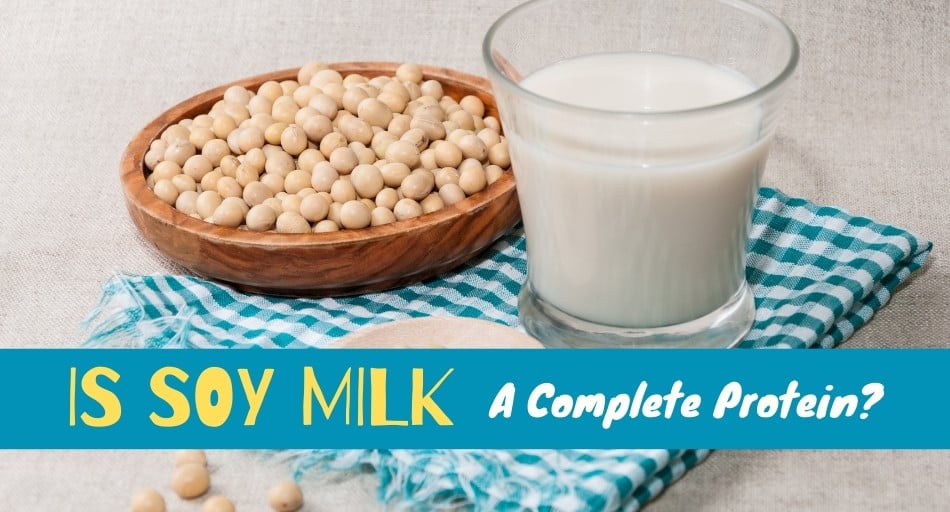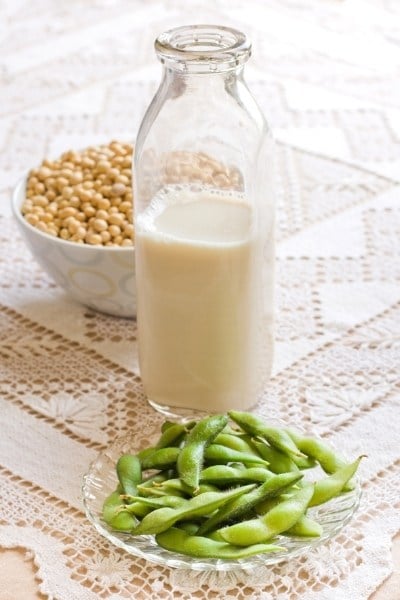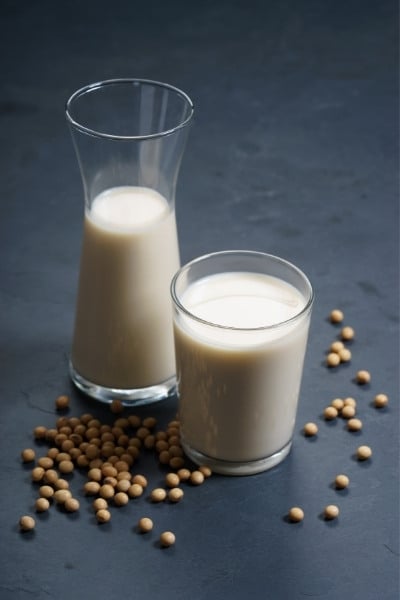Soy milk is a popular dairy-free alternative to cow's milk. It's high in protein and low in fat. It's also a good source of vitamins and minerals and doesn't contain cholesterol or lactose.

But, today we're asking, is soy milk a complete protein?
Table of Contents
- Is soy milk a complete protein?
- Why is soy milk a complete protein?
- How can you get the most out of the protein in soy milk?
- What are the types of soy milk?
- What are the factors to consider when choosing healthy soy milk?
- Is almond milk a complete protein?
- Is oat milk a complete protein?
- What are the health benefits of soy milk?
- How to prepare soy milk?
- What are the side effects of soy milk?
- Frequently Asked Questions
- Conclusion
Is soy milk a complete protein?
Soy milk is a complete protein, which means it contains all the essential amino acids your body needs. It's also low in saturated fat and a good source of vitamins and minerals, making it a healthy alternative to cow's milk.
So, if you're looking for a nutritious and delicious way to get your daily dose of protein, soy milk is a great choice.
Organic Soy Milk
Why is soy milk a complete protein?
Soy milk is a complete protein because it contains all the essential amino acids which include histidine, isoleucine, leucine, lysine, methionine, phenylalanine, threonine, tryptophan, and valine which your body needs but can't make by itself.
How can you get the most out of the protein in soy milk?
There are a few simple ways you can make sure you're getting the most out of the protein in soy milk:
- Choose soy milk that is fortified with vitamins and minerals
- Add soy milk to your breakfast or lunch for an extra protein boost
- Mix soy milk with fruit or other ingredients to make a smoothie
- Use soy milk in place of cow's milk in your favorite recipes
Soy milk is a healthy and delicious way to get the protein your body needs. By choosing fortified soy milk and adding it to your diet, you can make sure you're getting the most out of the protein in soy milk.
What are the types of soy milk?
There are different types of soy milk which include:
Regular soy milk: This is the most common type of soy milk. It is made from a blend of soybeans and water.

Fortified soy milk: This type of soy milk has added vitamins and minerals, such as calcium, vitamin D, and vitamin B12.
Flavored soy milk: This type of soy milk has added flavors, such as vanilla, chocolate, or strawberry.
What are the factors to consider when choosing healthy soy milk?
When choosing healthy soy milk, you should consider several factors, such as the type of soy milk, the fortified vitamins and minerals, and the expiration date.
You should also check the nutrition facts label to see how much protein and fat the soy milk contains.
Is almond milk a complete protein?
No, almond is not a complete protein. However, it is a good source of magnesium, phosphorus, potassium, and vitamin E.
Almond milk is a dairy-free alternative to cow's milk that is made from almonds. It is a good choice for those who are lactose intolerant or have dairy allergies
Is oat milk a complete protein?
Oat milk is not a complete protein, but it is a good source of protein. Oat milk contains about 3 grams of protein per cup, which is not the same as cow's milk or soy milk which contains 7 to 8 grams.
However, oat milk is a good option if you are looking for a non-dairy milk alternative that is high in protein.
What are the health benefits of soy milk?
The health benefits of soy milk include:
- Dairy-free alternative for people with lactose intolerance or allergies to cow's milk
- Good source of protein, vitamins, and minerals
- Low in fat and calories
- Does not contain cholesterol
- May help to lower cholesterol levels and improve heart health
- Soy milk can help reduce the risk of cancer
- Soy milk can help improve bone health
- Soy milk can help improve cognitive function
How to prepare soy milk?
You can prepare Soy milk with either whole soybeans or soybean flakes, and the process is very similar to preparing cow's milk.
The beans are soaked in water overnight, then rinsed and drained. They are then ground in a food processor or blender with water, and the mixture is strained to remove the bean pulp.
The soy milk is then ready to be used in any recipe that calls for milk. It can also be flavored with vanilla, chocolate, or other flavors, and sweetened with sugar, honey, or other sweeteners.
What are the side effects of soy milk?
Soy milk is generally considered safe for most people. However, some people may experience digestive issues, such as bloating, gas, or diarrhea.
Soy milk may also cause allergic reactions in some people. If you have a soy allergy, you should avoid soy milk and other soy-based products.
If you are allergic to cow's milk, you may be able to tolerate soy milk. However, it's always best to speak with your doctor before trying any new food.
Frequently Asked Questions
Soy milk is a vegan-friendly alternative to cow's milk. It does not contain any animal products and is made from soybeans, water, and optionally sweeteners. Soy milk is a good source of protein and vitamins and can be used in cereal, coffee, baking, or to make vegan cheese or yogurt.
Fortified soy milk is a good alternative for babies who are allergic to cow's milk or cannot tolerate lactose. Soy milk is not recommended for infants under the age of 6 months. If you are considering giving your baby soy milk, speak to your doctor first.
Soy milk can be stored in the fridge for up to 5 days. Once opened, soy milk should be used within 2 days.
Some good ways to enjoy soy milk include drinking it plain, using it in place of cow's milk in recipes, or adding it to coffee or tea. Soy milk can also be used to make smoothies, milkshakes, or other creamy beverages. soy milk can also be used in baking or as a non-dairy creamer.

Conclusion
In conclusion, soy milk is a versatile, nutritious, and delicious dairy-free alternative to cow's milk. It's perfect for people with lactose intolerance or those looking for plant-based milk.
Plus, it's easy to make at home. Give soy milk a try in your favorite recipes or simply enjoy it on its own. Your taste buds will thank you.
Sources: Harvard School of Public Health, USDA, ResearchGate


